Silicon Motion SM2256 SSD Controller Preview: TLC for Everyone
by Kristian Vättö on June 17, 2015 8:15 AM EST- Posted in
- Storage
- SSDs
- TLC
- Silicon Motion
- SM2256
Random Read Performance
For full details of how we conduct our Iometer tests, please refer to this article.
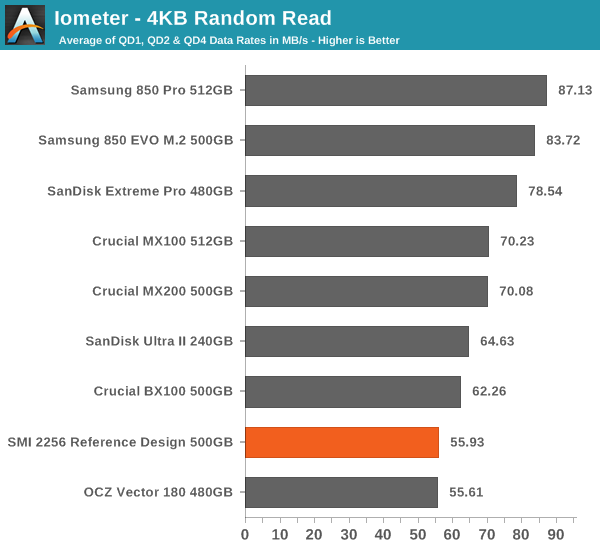
Random read performance has never been Silicon Motion's biggest strength and it actually slightly decreases with the new SM2256 controller, although that's most likely due to the slower TLC NAND.
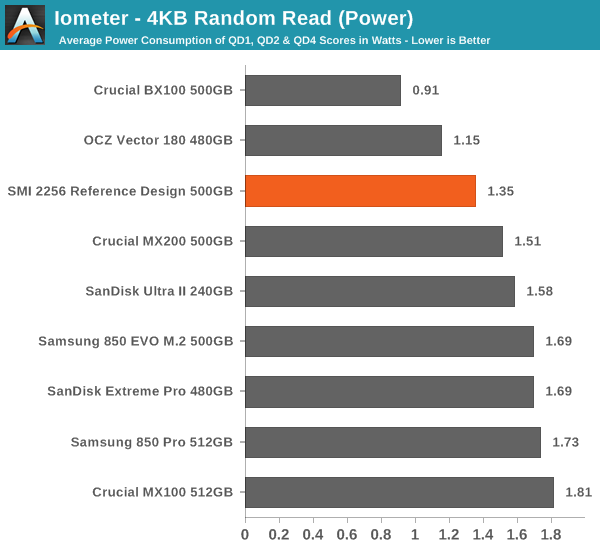
Power also goes up quite significantly, but compared to other drive it's still relatively low -- just not SM2246EN low.
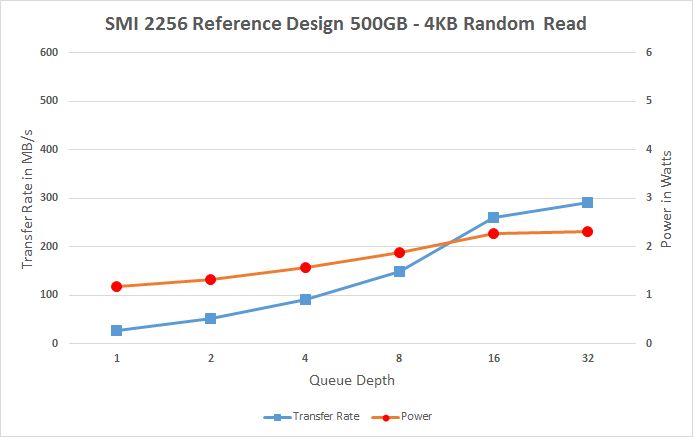 |
|||||||||
Queue depth scaling behavior seems to be similar to the SM2246EN, although at a higher power consumption. The scaling could be a little more aggressive because especially the QD4 and QD8 scores can't match the competition.
Random Write Performance
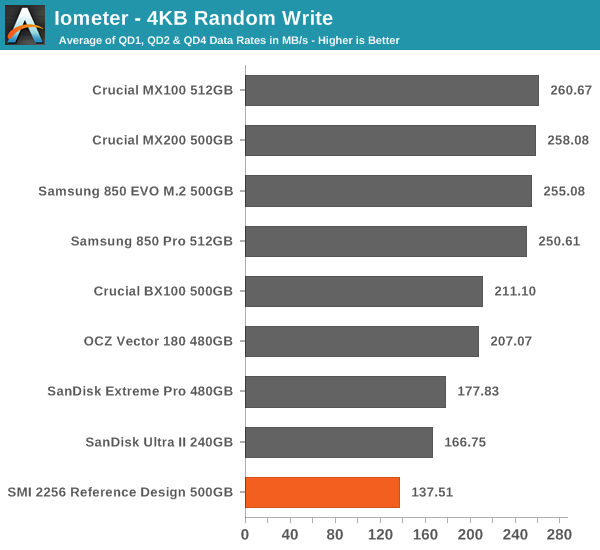
Random write performance isn't too good as the SMI 2256 turns out to be the slowest of the bunch. I wonder how big of a difference another manufacturer's TLC NAND would make, but we should find that out once the retail drives ship in the next couple of months.

Power efficiency is pretty poor given that performance is low, but power consumption is average.
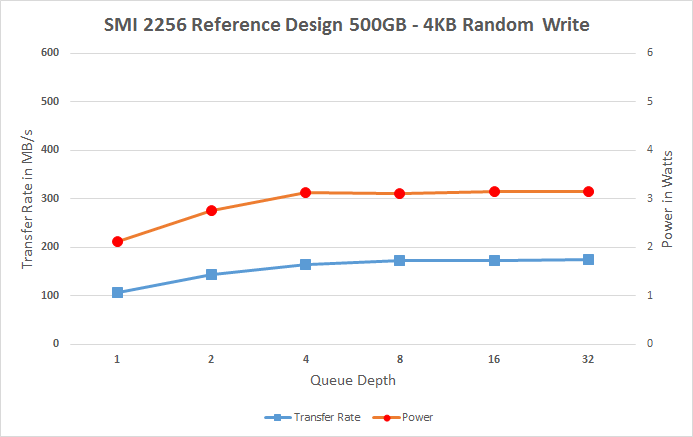 |
|||||||||
It's obvious that TLC NAND limits the performance because there's practically almost no scaling at all with the queue depth. The good news is that low QD performance is pretty decent -- it's the high QD operations that suffer the most from TLC NAND, but those are very rare in typical client workloads.










34 Comments
View All Comments
Oxford Guy - Saturday, June 20, 2015 - link
Apple reportedly abandoned TLC because of the defects.serndipity - Saturday, June 20, 2015 - link
Have noticed that, as the NAND manufacturers shrunk the die process, issues with both MLC and TLC based SSDs have begun surfacing.Glad to see that Samsung, with its 3D NAND technology, used in the 850 PRO and 850 EVO, has been able to return to a much more stable process size (e.g. almost 3X that of current MLC).
viktorp - Thursday, July 2, 2015 - link
TLC NAND isn’t welcome at any price.Ask yourself simple question – what parts of your personal data will you trust to storage designed specifically to have 10 times less endurance than technology it is supposed to replace (MLC).
I am upset just thinking that someone thought of it as being a good idea.
cbjwthwm - Thursday, September 3, 2015 - link
The big problem here is a newer gen product at 2x the capacity of the equivalent architecture Sandisk Ultra II which for the most part gets outperformed by it. It would be interesting to see what the shipping firmware of this type of product eventually performed like compared to the reference design, but otherwise I see no reason to consider this vs the Marvell-based Ultra II.